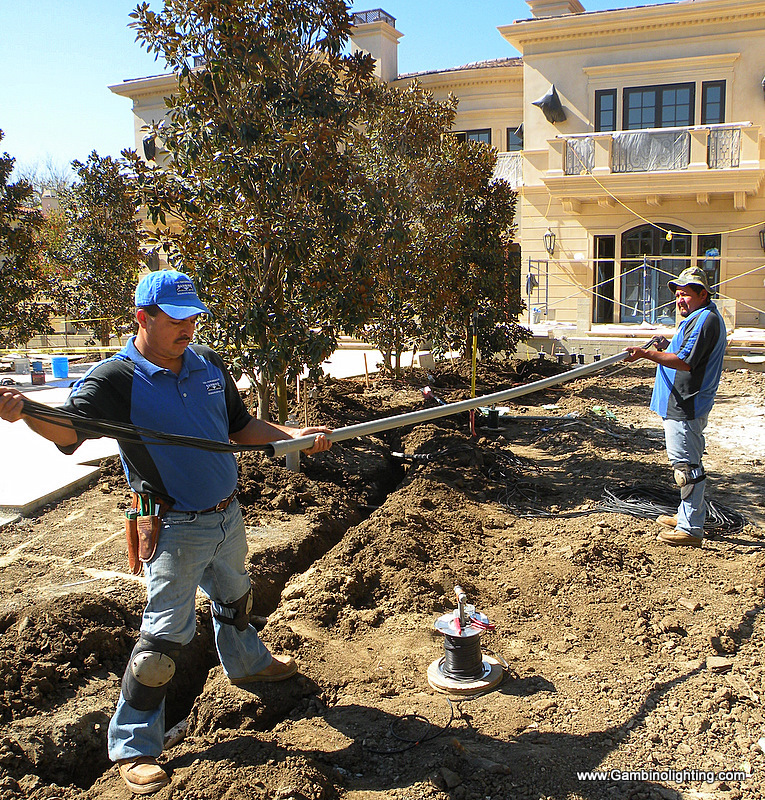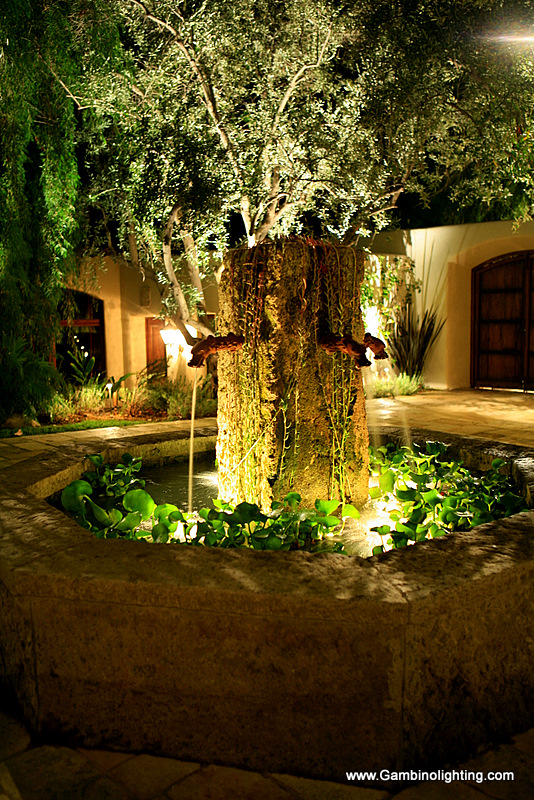22 Jul Installing low voltage lighting cable inside conduit (pipe)
by Mike Gambino
Installing low voltage landscape lighting cable inside rigid PVC electrical conduit pipe during new construction projects and even installations into existing landscapes is something we do standard on all of our projects.
Industry standard is to just direct bury low voltage lighting cable in the ground unprotected.We far exceed industry standard in every aspect of our system from connections to transformers so industry standard is something that is really not in our vocabulary.
The practice of installing cable inside pipe does add additional cost to the project as it is labor intensive and of course there is the cost of the grey electrical pipe. However I feel that it really pays for itself in short time as it prevents costly call backs due to cut cables from garden work or damage from rodents etc. This is not even mentioning the downtime and aggravation of dealing with damaged wire on the part of the homeowner.
It also gives us the piece of mind during new construction that other trades are not going to nick or cut our cable without our knowledge while doing there work digging in the ground. The worst kind of cable damage is the slight damage done that still allows fixtures to work but allows water to come in contact with the copper strands, silently deteriorating and degrading it over time which becomes a future problem that may be costly and difficult to fix. Slight damage is also the worst because its hard to detect and because it deteriorates so slowly and dims light output so slowly it doesn’t get recognized by the homeowner who views it every day.
Conduit just makes for a much more stable system. I made the decision 4 years ago to make this practice standard and it has worked out extremely well for my business.
I don’t know of any competitor that even offers this enhanced service as an extra let alone standard.
An additional benefit to the protection value pipe provides is the fact that there exists the ability to less expensively install additional cable inside the same conduit in the future shall the need arise. This can make future work more appealing and less costly. It can also limit the amount of digging required needed when going back to install additional lighting in a previously installed system.
Obviously trenching done during new landscape construction work is not an issue with disruption to the property but installing into completed and mature landscapes can be if caution and care is not taken.
That is why we take special care in digging around established tree roots by going around, under and not cutting though critical ones. We also pride ourselves in taking special care around lawns, shrubs and ground covers. Our goal is to impact the landscape as little as possible.
 Installing our cable inside conduit keeps our systems (like the one depicted in photo below) looking great long into the future.
Installing our cable inside conduit keeps our systems (like the one depicted in photo below) looking great long into the future.
It is what separates us from others who will not make the effort or value the importance.
This landscape lighting blog is published by Mike Gambino of Gambino landscape lighting inc. all rights reserved. Mike is a professional landscape lighting system designer/ builder and has been designing, installing and maintaining landscape lighting systems for more than 20 years. Mike resides in the Los Angeles area with his wife and 2 sons. To visit his website go to www.gambinolighting.com . To inquire about hiring Mike please click here .
Blog articles may be published with permission on other websites without editing or removing links.




zobacz
Posted at 12:42h, 27 FebruaryWonderful goods from you, man. I’ve understand your stuff previous to and you’re just too magnificent.
I actually like what you’ve acquired here, really like what you’re
saying and the way in which you say it. You make it entertaining and
you still take care of to keep it sensible.
I cant wait to read far more from you. This is actually a
great site.